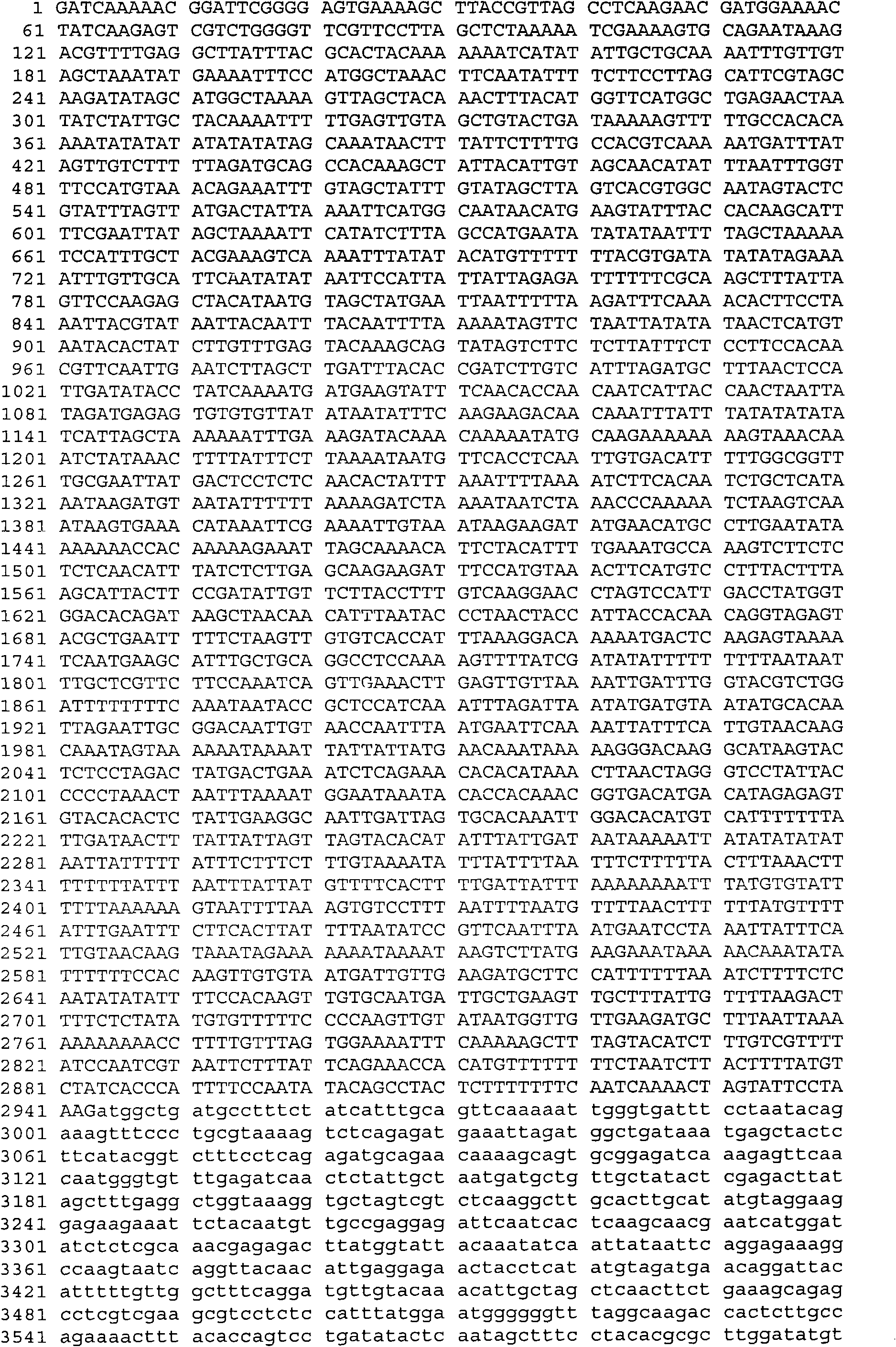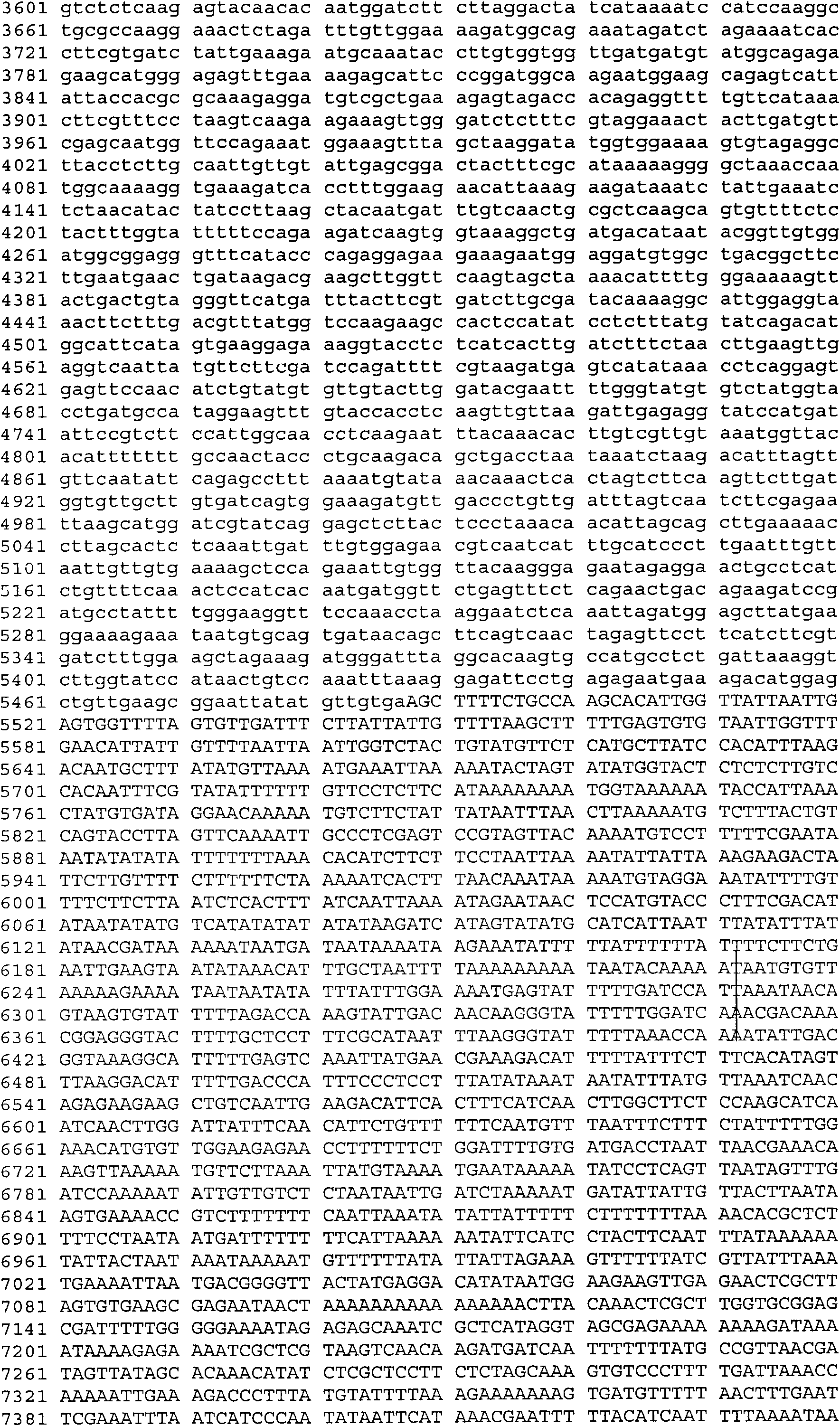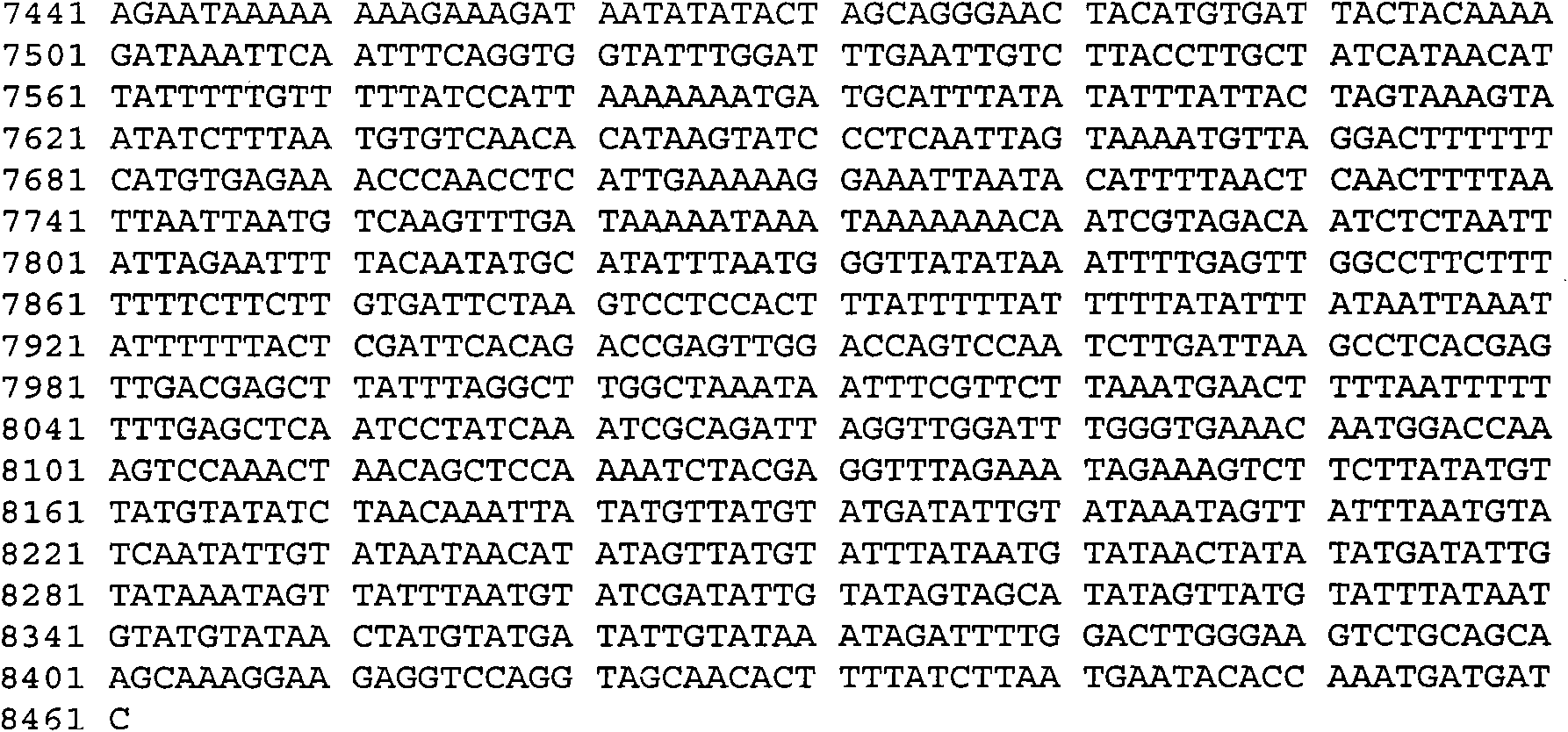Use of r-genes as a selection marker in plant transformation and use of cisgenes in plant transformation
A kind of technology of gene and plant, applied in the field of plant transformation of Solanaceae plants preferably potato
- Summary
- Abstract
- Description
- Claims
- Application Information
AI Technical Summary
Problems solved by technology
Method used
Image
Examples
Embodiment 1
[0120] Selection of homologous gene R3a transformants
[0121] Construction of vector pBINmf::R3a
[0122] The binary vector pPGB-1S (Kuipers et al., 1995) derived from pBI121 was digested with the enzymes PmeI and ClaI to remove the NptII gene. ClaI sticky ends were blunt-ended by Klenow polymerase treatment, followed by circularization of the vector DNA by blunt-end ligation using T4 DNA ligase. This generated the vector pPGBmf (without marker) containing the potato GB SSI promoter followed by the NOS terminator (as a 1140-bp HindIII / EcoRI fragment) in the T-DNA. The construct pPGBmf was digested with HindIII and EcoRI to obtain two fragments of 1140 bp and 9681 bp. A 9681-bp fragment containing the internal LB (left border) sequence, LB, backbone vector DNA, RB and internal RB sequence was separated from the agarose gel.
[0123] Double-stranded oligonucleotides were prepared by annealing primers AWO1 (5'-AGCTTGGCGCGCCCGGGTTAATTAAG-3') and AWO2 (5'-AATTCTTAATTAACCCGGGCGC...
Embodiment 2
[0144] Selection of homologous gene R3a transformants
[0145] Construction of vector pBINAW2b::R3a with reduced T-DNA borders
[0146] A new backbone vector comprising RB and LB was constructed using pBIN19 as a starting material. Primers for digesting RB and LB. The RB upstream DNA sequence was amplified from 1156 bp pBIN19 using primers URB (5'-GCGGTCCTGATCAATCGTCAC-3') and RBK (5'-GGTACCTGACAGGATATATTGGCGGGTAAA-3'; with KpnI site). The LB downstream DNA sequence was amplified from 627 bp pBIN19 using primers LBKX (5'-GGTACCTCTAGAGTTTACACCCAATATCC-3'; with KpnI and XbaI sites) and DLB (5'-GCGGGTTTAACCTACTTCCTTT-3'). Both PCR products were cloned into pGEM-T and sequenced. Digestion with SacI and KpnI liberated the RB upstream sequence from the pGEM-T vector. LB downstream sequences were released from the pGEM-T vector by digestion with KpnI and NsiI. Fragments were separated from the agarose gel. The SacI / KpnIRB upstream sequence and the KpnI / NsiI LB downstream sequen...
Embodiment 3
[0182] GBSS-IR construct without tag
[0183] Construction of All Potato GBSS-IR T-DNA Vectors
[0184] The T-DNA sequence was entirely derived from the potato GBSSI genome sequence. For the cloning of the extended GBSSI promoter, the HindIII site upstream of commonly used promoters was determined (Visser et al., 1991b; van der Leij et al., 1991a; accession number X58453) up to 0.6 kb upstream of the BglII site (van der Leij et al., 1991a) the sequence of. This PCR was performed using the DNA of plasmid pWAM101 (van der Leij et al., 1991b) as a template with primers GBSS-0 (5'-TACCGCTACCACTTGACATTC-3') and BINMCS (5'-GCACCCCAGGCTTTACACTTT-3'). The 738-bp sequence between BglII and HindIII is highly homologous (98% identity) to the sequence published by Dai et al. (1996) (Accession No. X83220). Primers were designed to amplify the GBSSI promoter and upstream region: primer UPGBX (5'-CTCTAGAAGTTCGAGACACTGGCTACG-3'; with XbaI site) and primer PGBB (5'-GGATCCTGGAGGAGATGAGTAAAAG...
PUM
 Login to view more
Login to view more Abstract
Description
Claims
Application Information
 Login to view more
Login to view more - R&D Engineer
- R&D Manager
- IP Professional
- Industry Leading Data Capabilities
- Powerful AI technology
- Patent DNA Extraction
Browse by: Latest US Patents, China's latest patents, Technical Efficacy Thesaurus, Application Domain, Technology Topic.
© 2024 PatSnap. All rights reserved.Legal|Privacy policy|Modern Slavery Act Transparency Statement|Sitemap



